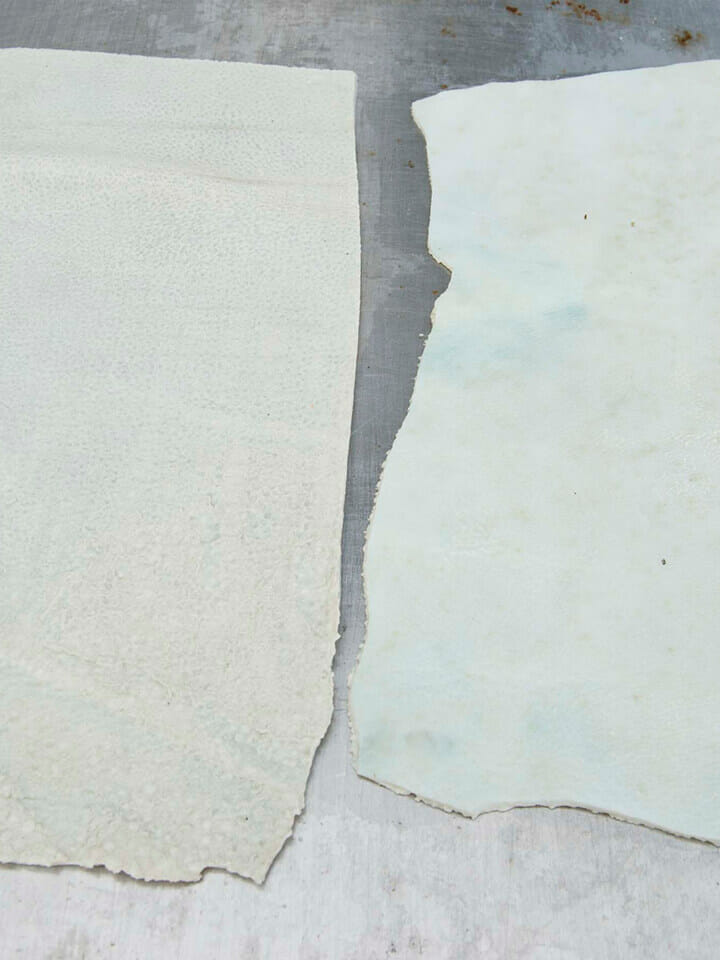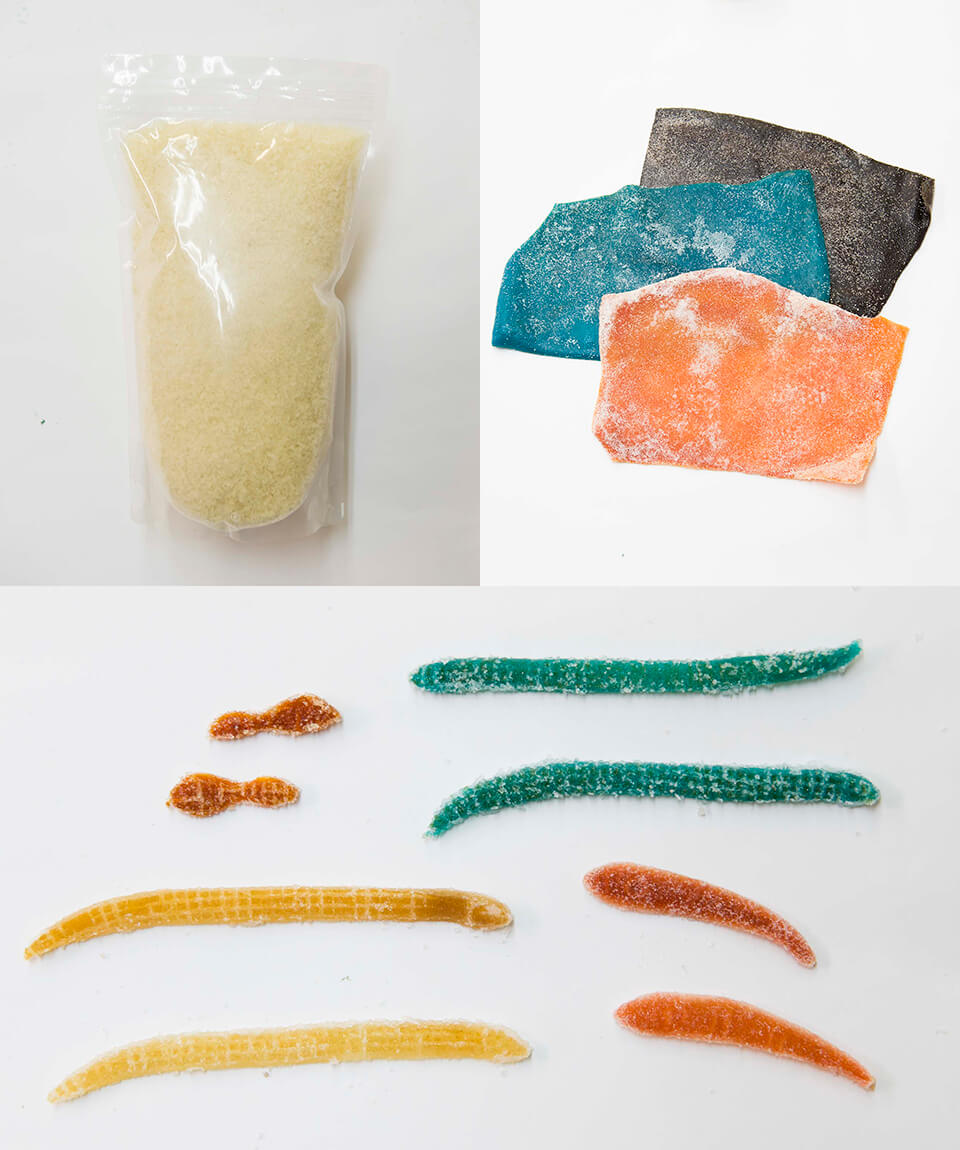
Knowledge: Gelatin
Gelatin:The wisdom of our ancestors to utilize God’s gifts without waste

Kawai Sangyo, which was founded in Mikawashima in Arakawa Ward, moved to Soka City in 1948. Initially, it mainly produced glue, beginning with the fourth generation, Kazunori Kawai, they started to specialize in raw glue and gelatin materials. Mr. Kawai is now one of the best gelatin material specialists in Japan.
"Gelatin is an extract and purification of collagen, one of the proteins contained in animal bones and skins. Its history goes back more than a thousand years. It was originally used as an adhesive, and in Japan, glue is also an adhesive. Gelatin and collagen are made for edible and pharmaceutical purposes by further improving the processing method and degree of purification of the raw materials."
Raw hides are graded, and, in industry parlance, there is the peke (useless or no good) skin. It is said that this skin becomes gelatin and glue. The process uses a drum, similar to leather tanning (see below for manufacturing process). "Actually, gelatin was a big market for camera films. The advent of digital cameras was a huge blow to the industry, but collagen for health foods and cosmetics began to become popular instead, and it continues to this day. As a next step, we have developed a collagen raw material for fishing lures in cooperation with research institutions. It is gaining popularity mainly in Fuji Goko (the five lakes of Mt. Fuji), which bans plastics."

The raw skin is dipped in a mixer-type drum filled with lime water and treated with alkali for about a week to remove unnecessary impurities such as hair and fat. After that, the pH is adjusted and the skin is washed with water to make it neutral over several days. It is finally dried through processes such as heat treatment, filtration, and extraction at the gelatin manufacturer to which it is delivered, and becomes a product such as gelatin and collagen.

It has a wide range of uses, including edible jellies and sake, pharmaceuticals such as various capsules and tablets, troches, and industrial films such as camera films. The photo on the bottom are fishing lures that Kawai Sangyo helped develop and commercialize.